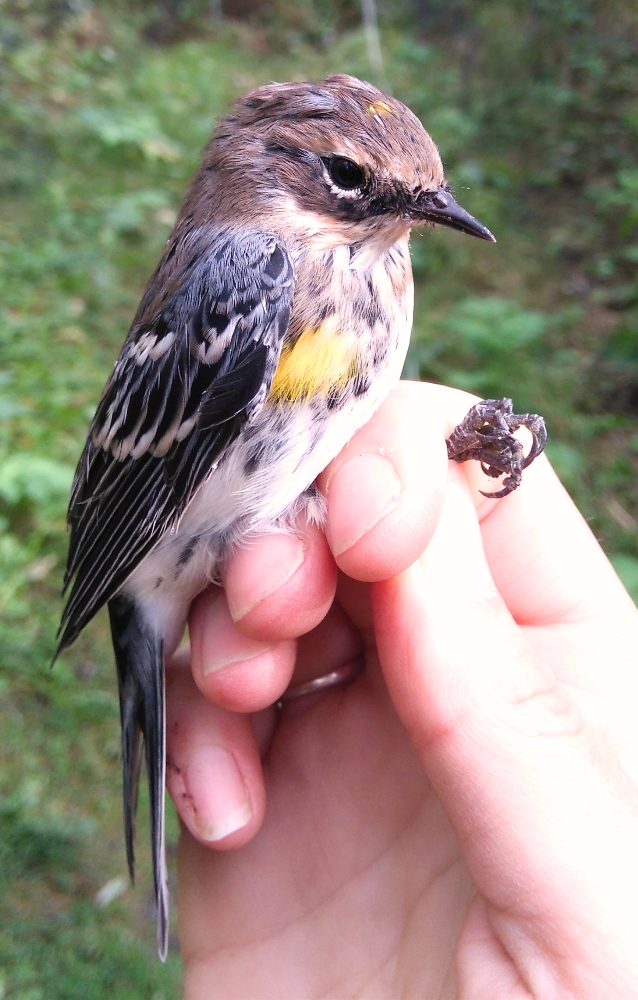The weather has finally decided to play nice this past week and banding consequently picked up. The wind hasn’t been blowing and the mostly overcast skies kept temperatures low creating ideal migrating and foraging conditions for songbirds. With a banding total of 101 one day (our new busiest day for the fall) and two days in the low 70s we are now at a total of 1690, which makes reaching the fall average of 1850 way more attainable than it was last week. Our species total also took a big jump this week. We banded our first slate-coloured junco, white-crowned sparrow and grey-cheeked thrush of the fall bringing us to 51 species banded so far this season. The majority of what we’ve been banding this week was once again myrtle warblers, but we have also caught really good numbers of Swainson’s thrush and white-throated sparrow. 
Adult male myrtle warbler moulting into fall plumage
We’ve been catching so many white-throated sparrows, in-fact, that they joined mourning warblers as another species that smashed its previous record high. Their previous high was set last year with 96 banded and so far we are at 130, which is not only over the fall average of 36 but is beating the annual average of 123. It isn’t too surprising that white-throated sparrows are doing as well as mourning warblers since they both breed in the same sort of habitat; the thick understory in the aftermath of the forest tent caterpillars benefitted both of these shrub-lovers. White-throated sparrows are probably the most well-known of all our native sparrows – even if you don’t think you know them, you know them. They are the bird that can be heard all the time throughout May, June, and July loudly whistling ‘ohhh sweet, Canada, Canada, Canada’.

White-throated sparrow
This past week we also started up northern saw-whet owl monitoring. It’s been a bit of a slow start with the first couple nights not catching anything and a couple nights being cut short due to rain but we have managed to band 6 owls so far. We employ a totally different strategy for saw-whets than we use for songbirds. At the migration station we have lots of nets set up through a variety of habitats that are suitable to a wide range of bird species. We don’t use any lures so that we can get an accurate representation of which species are around in what numbers as opposed to a bias representation based on which species like the lure we are using. This is called passive mist-netting. For owls we use active mist-netting; we have fewer nets that are all set in one habitat type and we play a call to attract the owls to the area the nets are in. We do this because there aren’t many species of migratory owls so we aren’t concerned about a bias species representation. Since 2004 we have focused solely on northern saw-whet owls, but this year we are planning on setting up a second set of nets with a different lure so that we can target our other migratory owl species – the boreal owl. Stayed tuned to find out how much success we have with this!

Northern saw-whet owl
